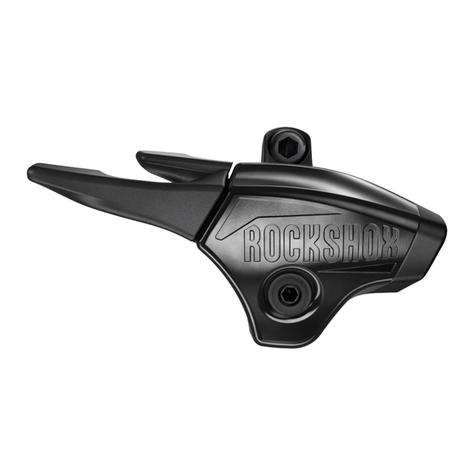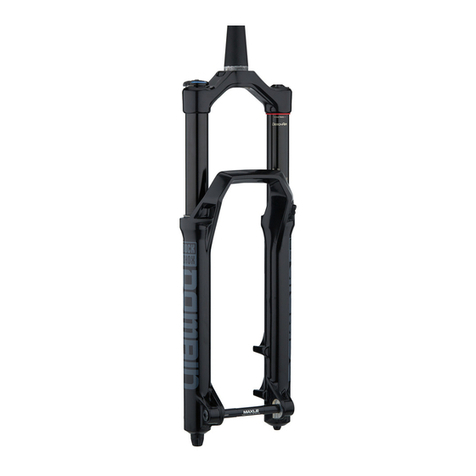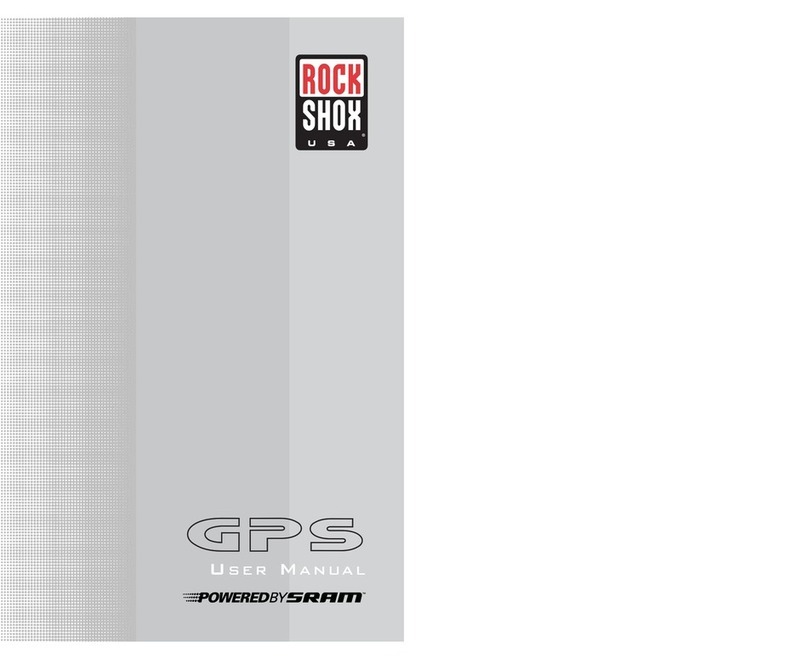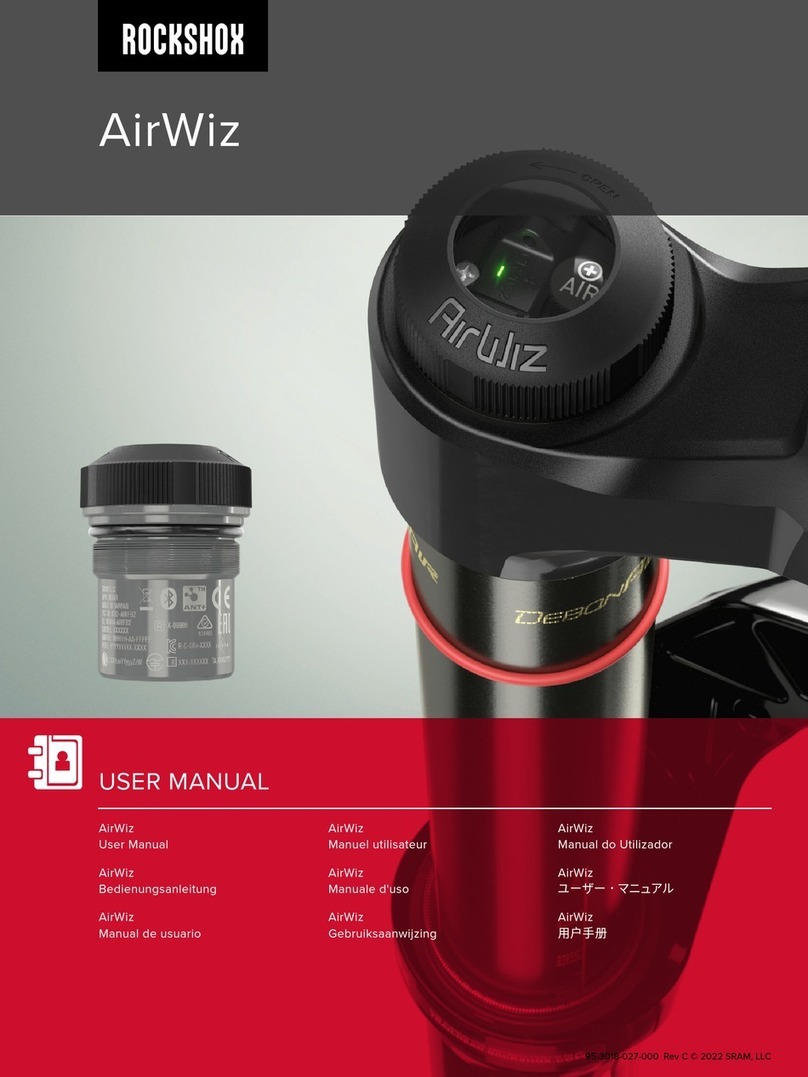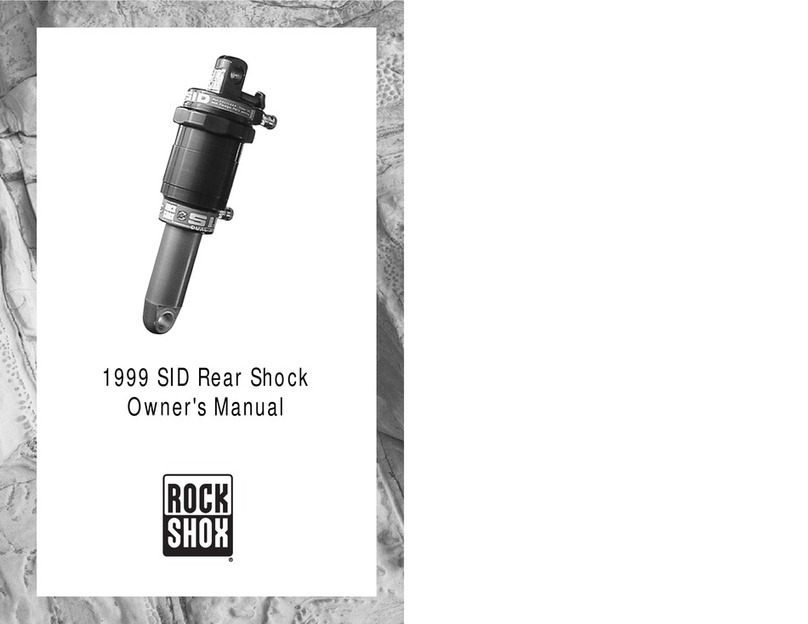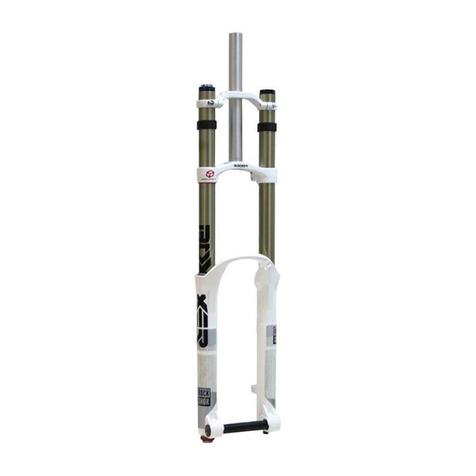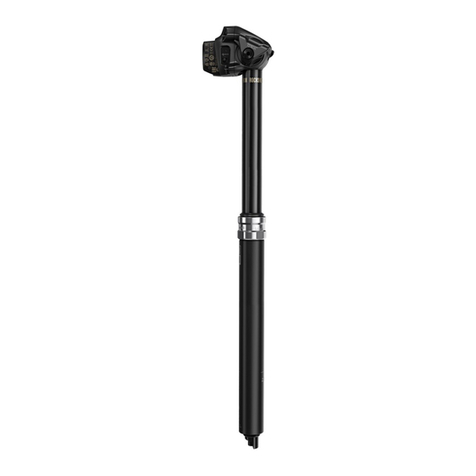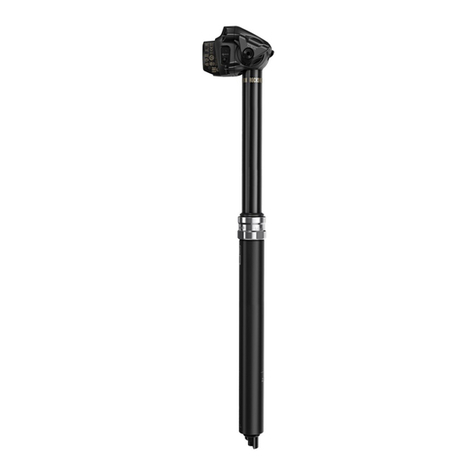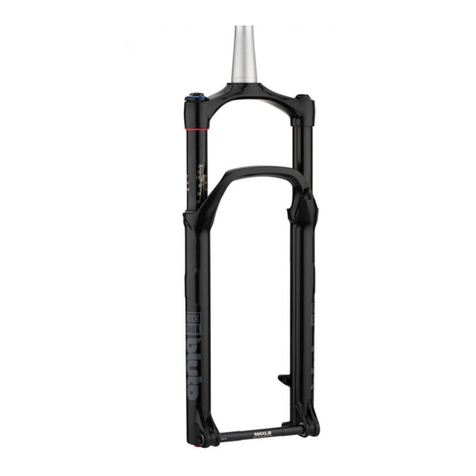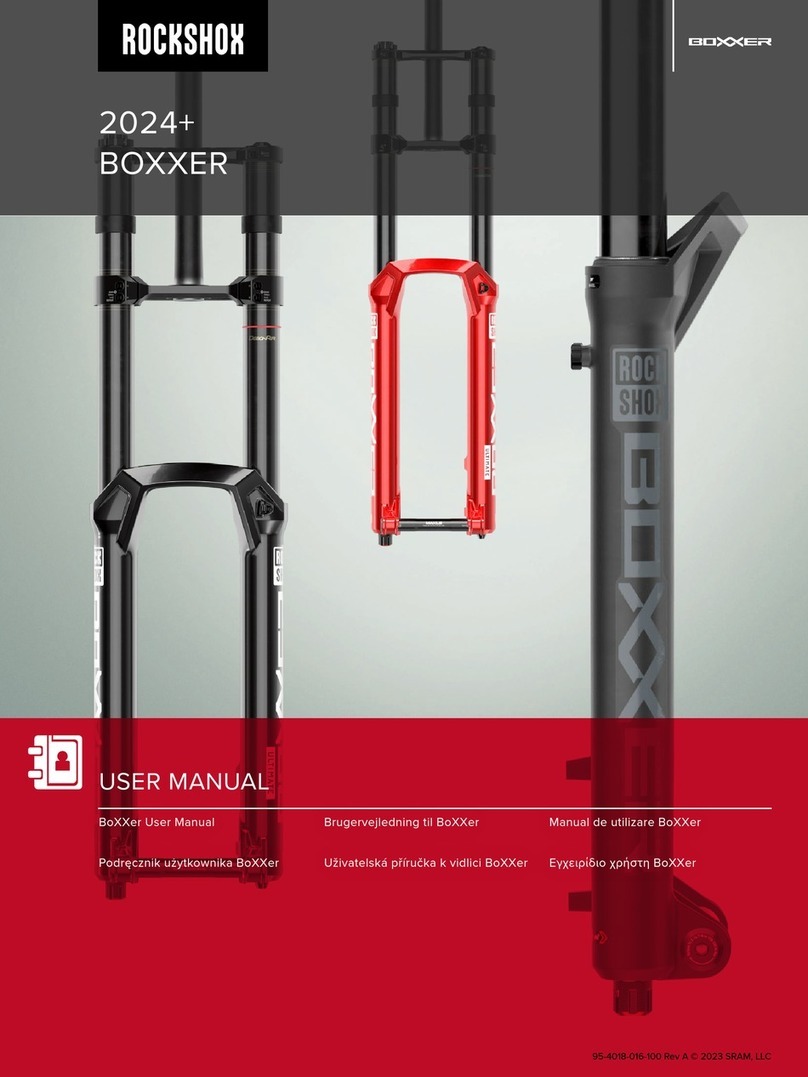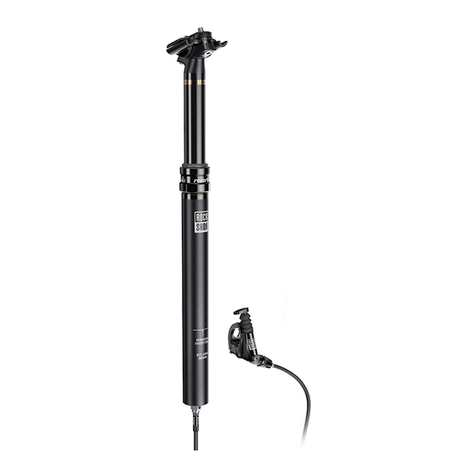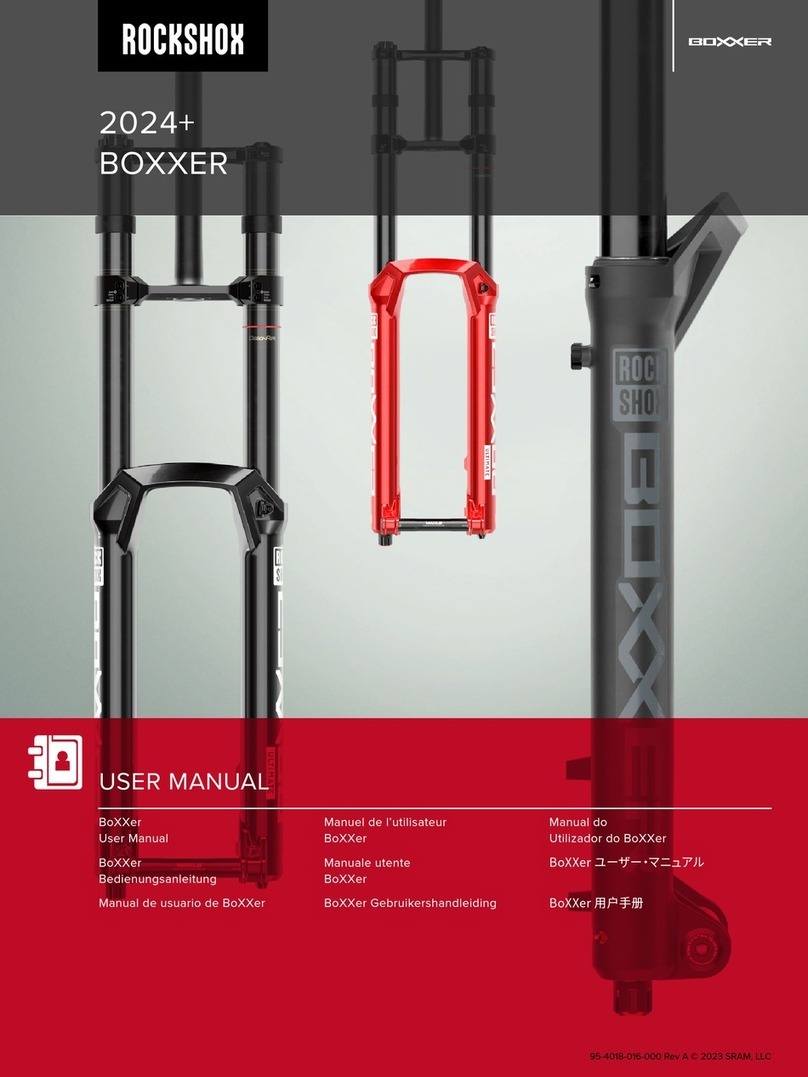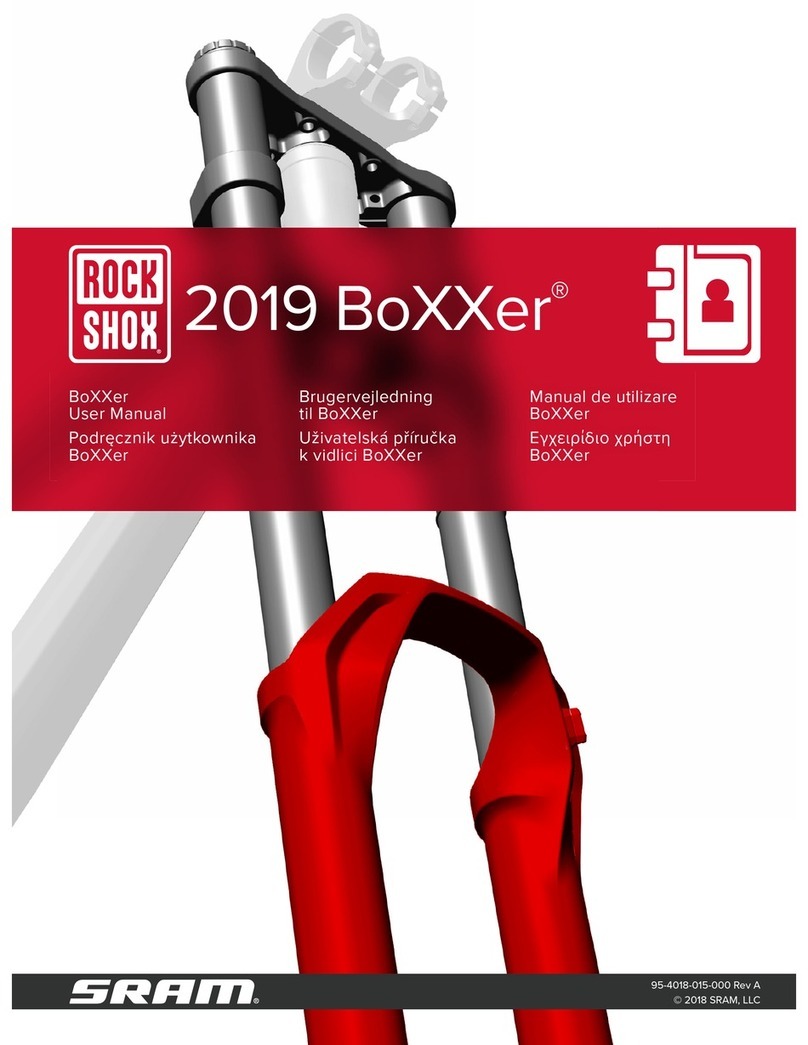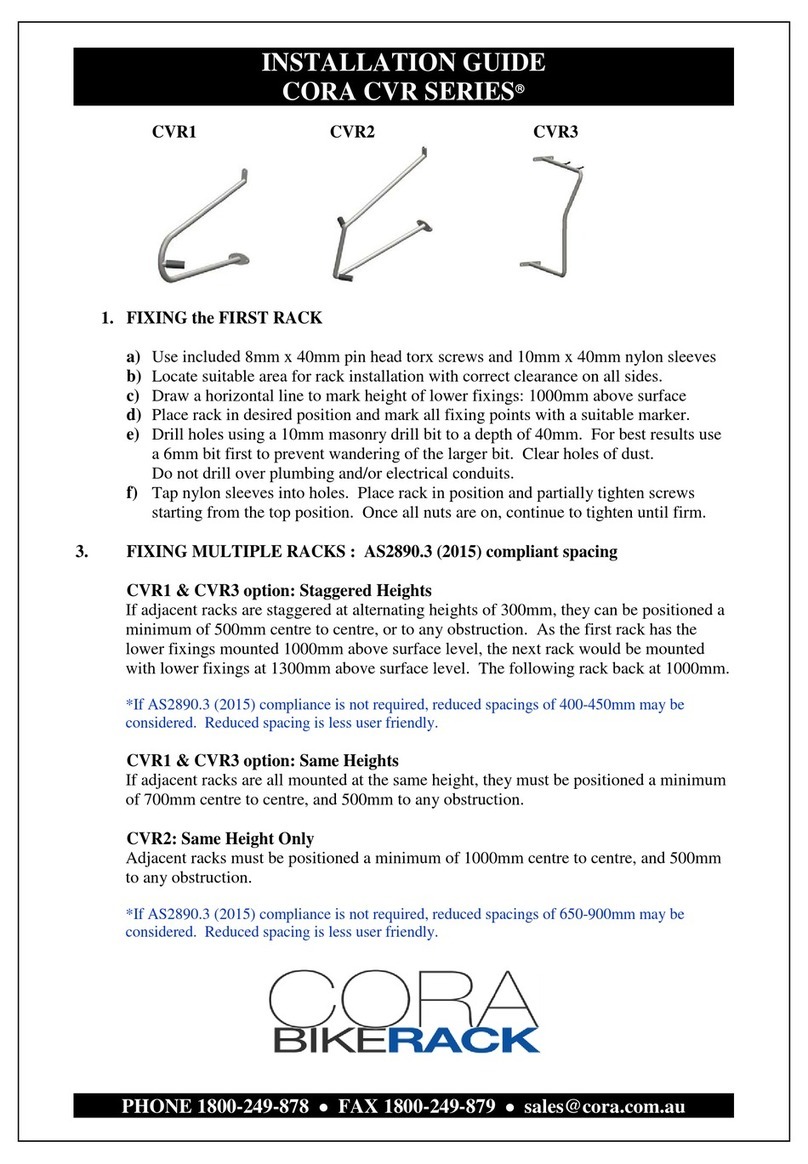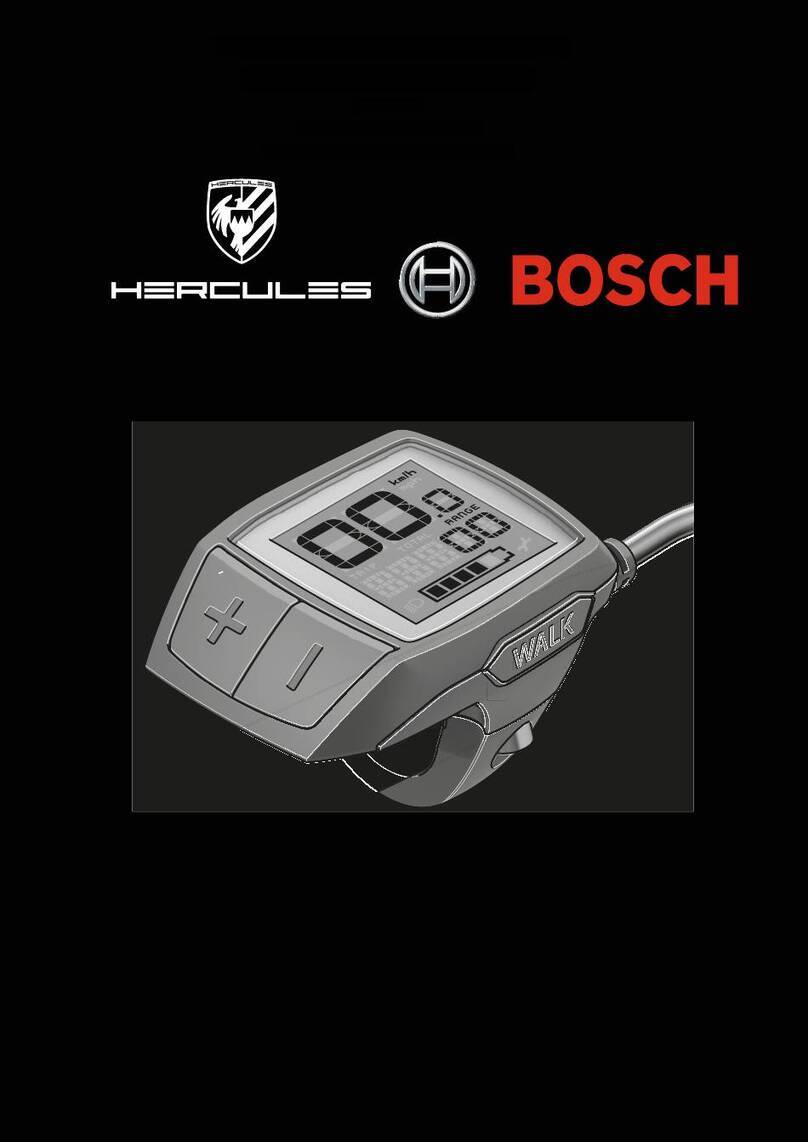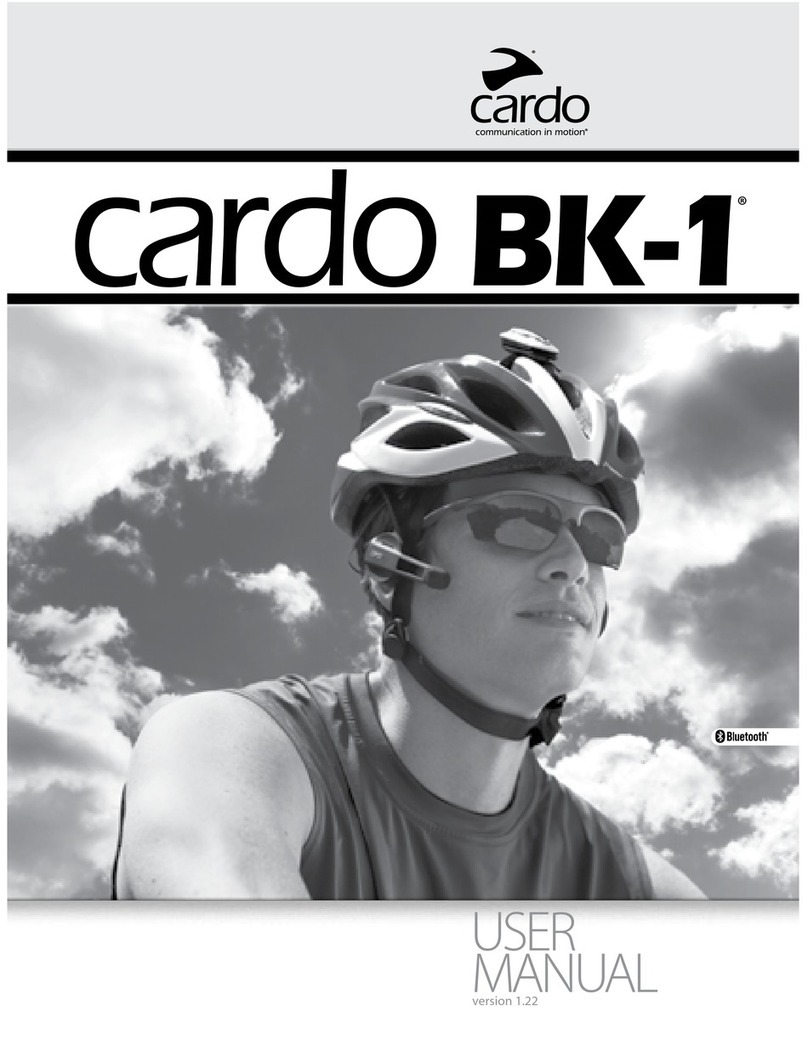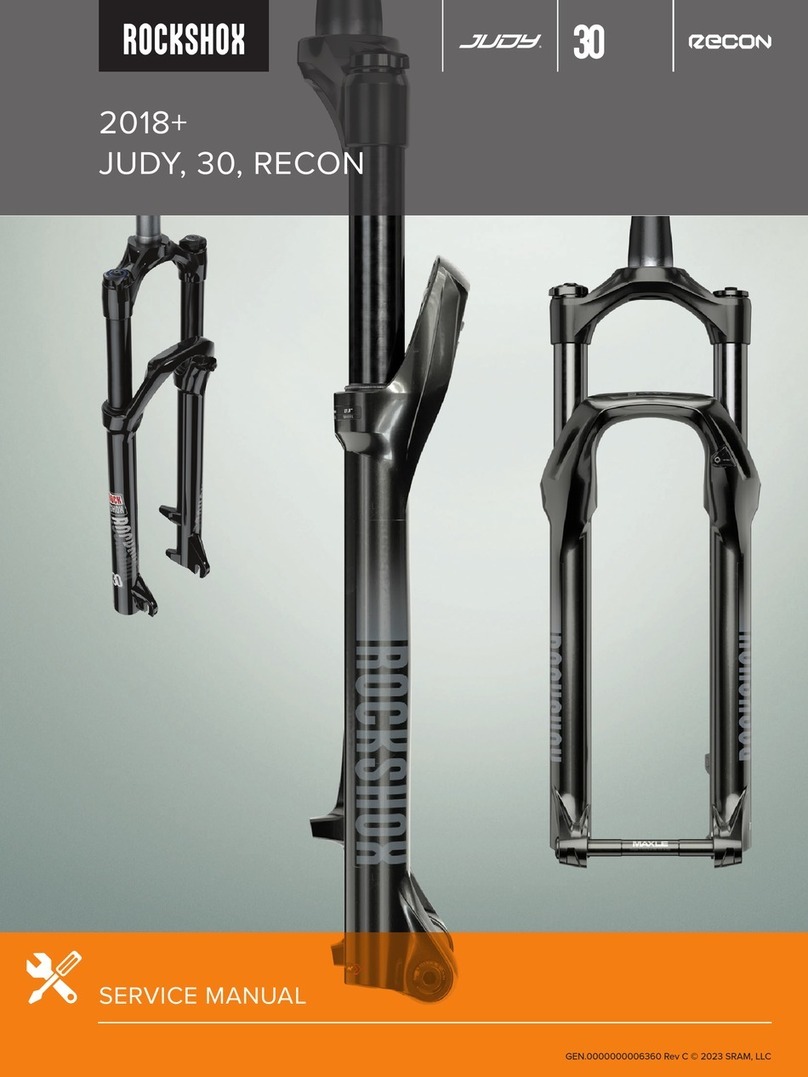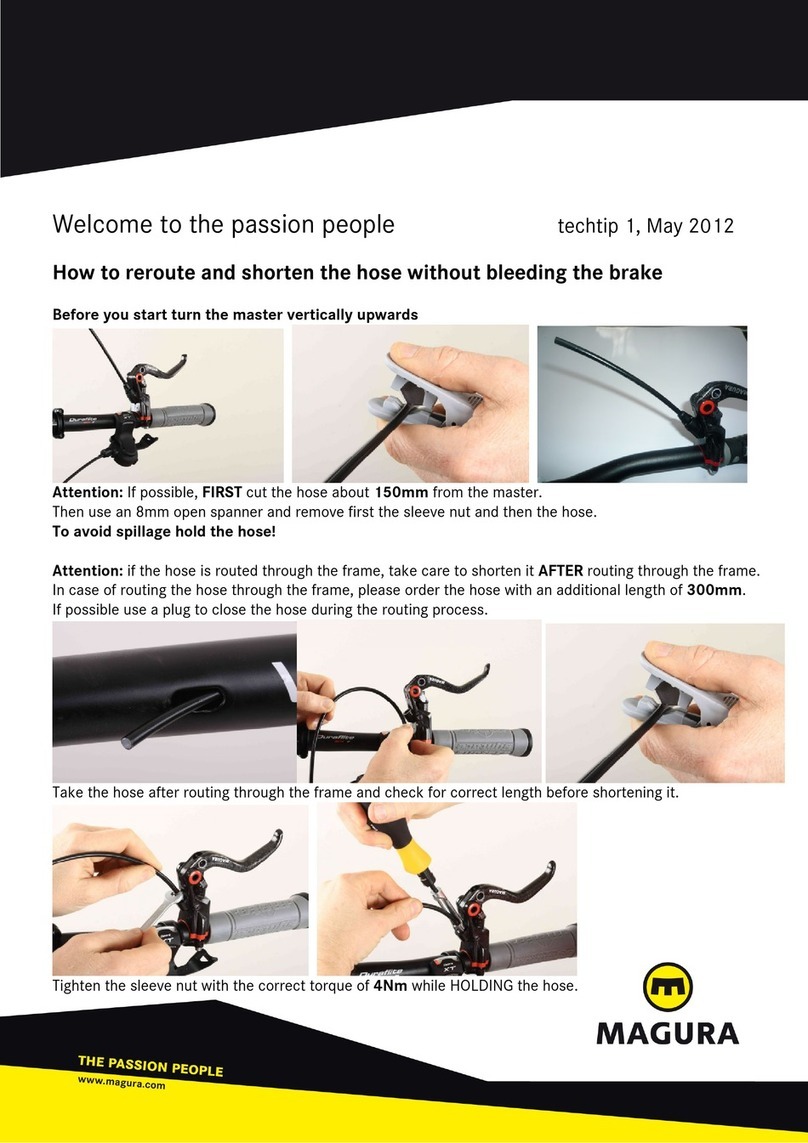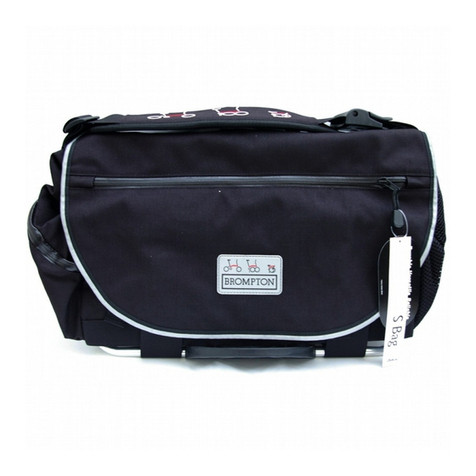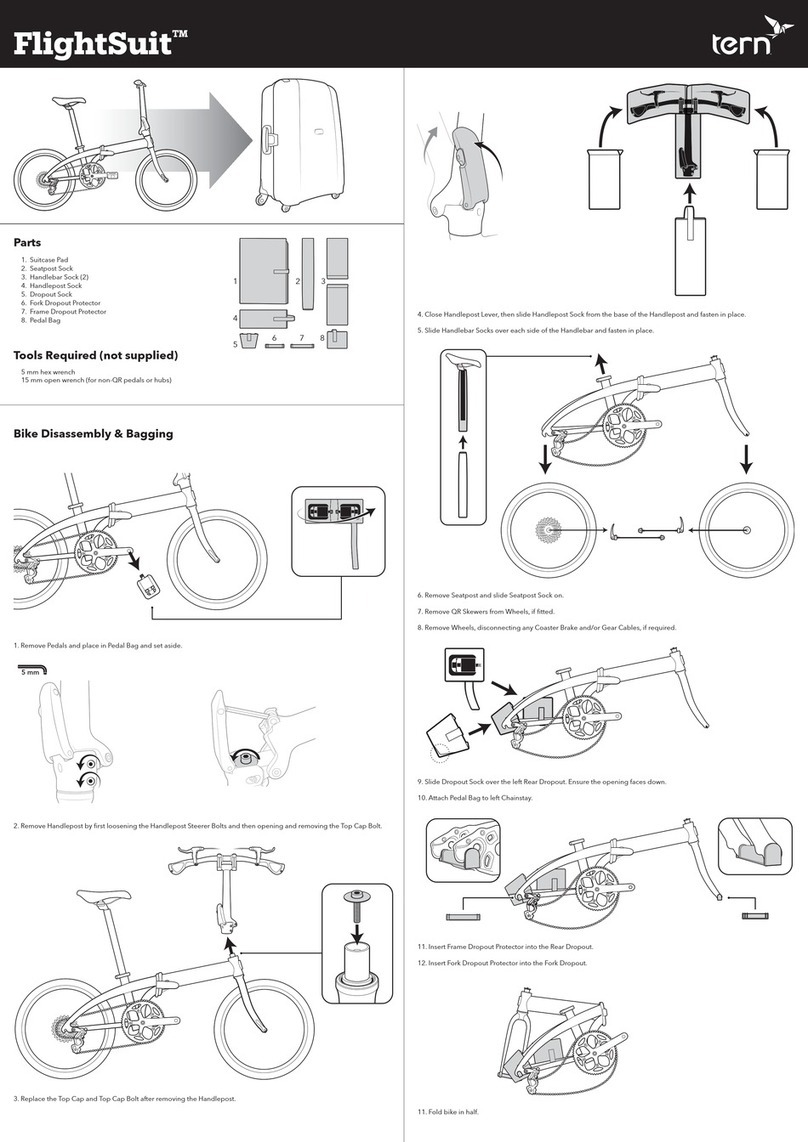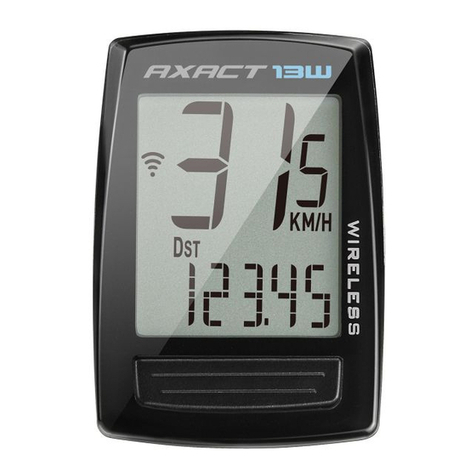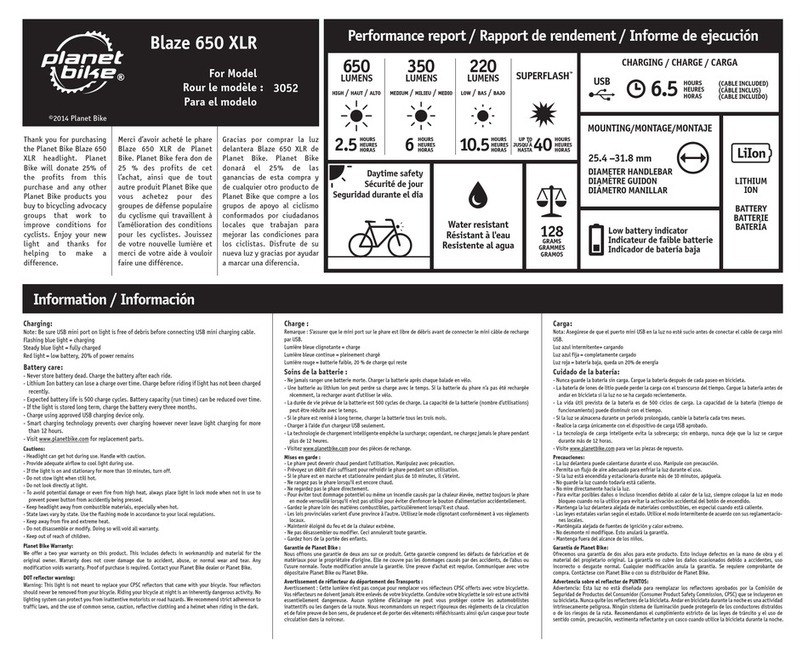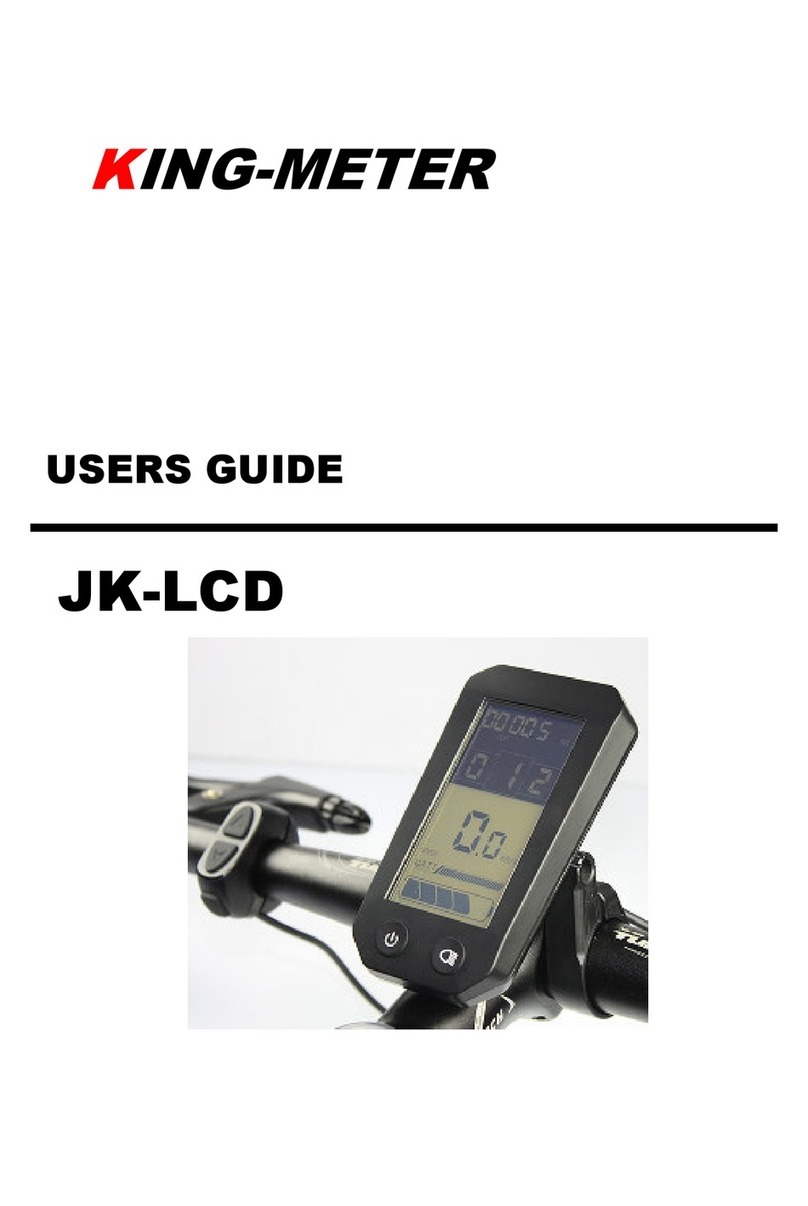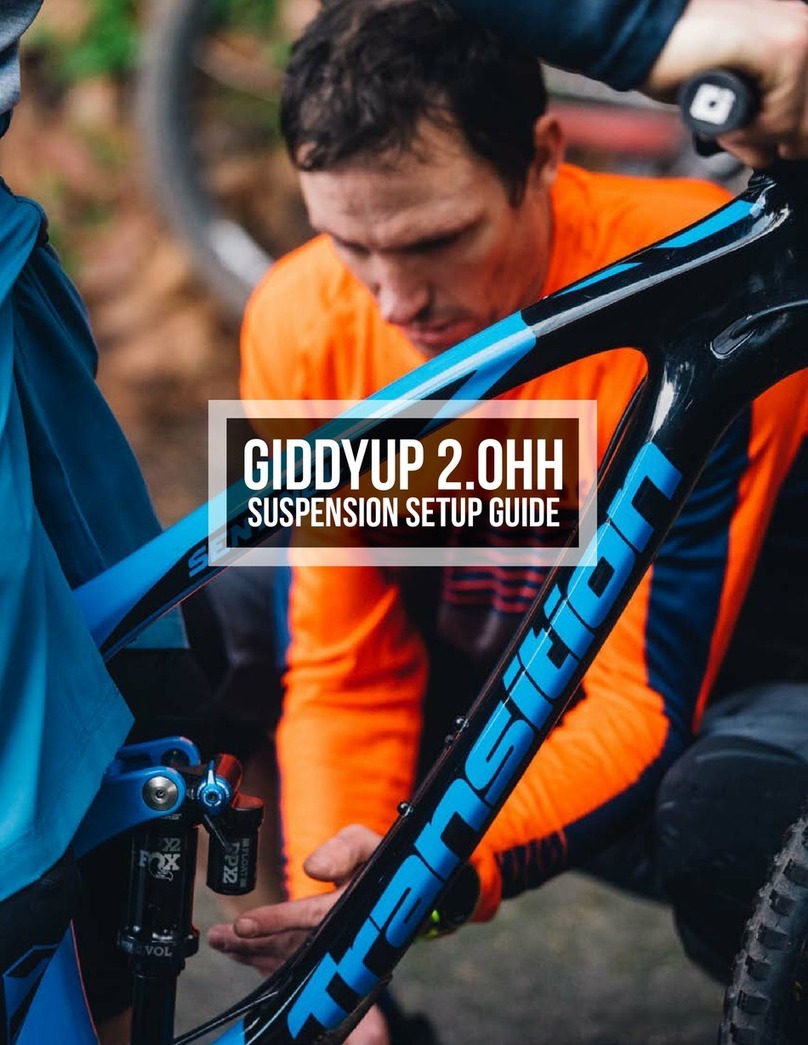6 950-006760-00, REV. A01
E
NGLISH
R
OCK
S
HOX
, I
NC
. • 2003 SID O
WNER
’
S
M
ANUAL
ROCKSHOX, INC. • MARCH 2002 7
R
OCK
S
HOX
, I
NC
. • 2003 SID O
WNER
’
S
M
ANUAL
E
NGLISH
Rider Weight XC (Plush Ride) Racing (Stiff Ride)
>120lb (55 kg) 70-80 psi 40-60 psi
120-140lb (55-65 kg) 80-100 psi 60-80 psi
140-160lb (65-73 kg) 100-120 psi 80-100 psi
160-180lb (73-82 kg) 120-140 psi 100-120 psi
>180lb (82 kg) 140-160 psi 120-140 psi
ADDING NEGATIVE AIR PRESSURE
Remove the schrader air cap from the bottom of the left shaft air valve. Using a RockShox air
pump, add the recommended air pressure through the bottom of the left shaft air valve. A small
amount of lubricant can escape while adjusting the negative air, use care to avoid contamination
of the disc brake rotors.
NOTE: RECOMMENDED MAXIMUM AIR PRESSURE IS 180 PSI. MORE NEGATIVE AIR THAN POSITIVE AIR WILL
CAUSE THE FORK TO LOSE TRAVEL
External Rebound Adjustment
Rebound damping controls the speed at which a fork returns to its full extension following
compression. Located at the bottom of the right fork leg is the rebound adjuster knob. Turning
the adjuster in the direction indicated by the "rabbit" on the rebound speed decal decreases
rebound damping, causing the fork to return to full extension faster. Turning the adjuster in the
direction indicated by the "turtle" increases rebound damping, slowing the return of the fork to
full extension.
Excessive rebound damping will cause the fork to "pack up" over successive bumps, reducing
travel and causing the fork to bottom out. Set your fork to rebound as fast as possible without
"topping out" or kicking back. This allows your fork to follow the contours of the trail,
maximizing stability, traction and control.
Changing Travel
To measure the amount of travel your fork has, measure the amount of exposed upper tube.
To change the travel of your fork for 63 to 80 mm you must perform a full service on your fork.
To obtain service information or instructions, visit our website at www.rockshox.com or contact
your local RockShox dealer or distributor.
PURE SYSTEM (WORLD CUP AND TEAM)
Your fork uses the Pure Damping System. This system provides maximum ride control,
allowing the rider to smooth out the bumps, with on-the-fly adjustable compression damping
(including lockout for climbing).
Climb-It Control Performance (Team)
To change the compression damping adjustment on your fork, locate the adjuster knob on the
top of the right leg. A clockwise adjustment increases the compression damping. Turning the
adjuster completely clockwise provides on-the-fly lockout to minimize movement while
sprinting or climbing. Integrated into the lockout system is a big-hit blow-off feature, allowing
fork movement in the event of an unexpected change in terrain.
To maintain lockout control and damping quality, the Pure Damping system should be rebuilt
once a year. We recommend that a qualified bicycle mechanic with proper tools should rebuild
the Pure Damping System. For more detailed service information, contact your local RockShox
dealer or visit www.rockshox.com.
3. Do not let brake or derailleur cables rest on or be attached to the crown. Abrasion over time may cause damage to
the crown. If contact is unavoidable, use tape or similar protection to cover the surface.
4. To prevent damage to the carbon crown-steerer, a qualified technician should take care when installing or removing
the crown race.
5. Follow the stem manufacturer's torque specifications when installing a stem. Exceeding the torque specifications may
damage the carbon crown-steerer and reduce the strength of the fork. Cotter style stems are not recommended as the
small surface area may cause damage.
6. Take your bicycle to a qualified dealer for inspection and repair if there is any question of component integrity due to
a crash or other direct impact.
PERFORMANCE TUNING
RockShox SID forks can be tuned for your particular weight, riding style, and terrain.
Setting Sag
SID forks are designed to sag when you are sitting on your bike. Sag is the compression of the
fork caused by the rider's weight. Proper sag allows the front wheel to follow the contour of
the terrain as you ride. Sag is adjusted by increasing or decreasing the positive air pressure of
your fork. Increasing the pressure in your positive chambers will decrease sag. Decreasing the
pressure in your positive air chambers will increase sag.
Travel Intended Use Sag
63 mm Racing 6-9 mm
63 mm XC 9-12 mm
80 mm Racing 8-12 mm
80 mm XC 12-16 mm
To measure sag, use the travel indicator on the upper tube of the fork and ensure it is flush
against the wiper seal. Sit on the bike with normal riding apparel. Step off the bike, and
measure the distance between the wiper seal and the travel indicator. This is your sag.
Air Pressure Guidelines
The positive air chamber is the fork’s spring. Always tune positive air pressure first, based on
the desired sag. More positive air gives a firmer ride, while less positive air gives a
softer/plusher ride. Use the tables below to assist with positive and negative air pressure.
Rider Weight Positive Air Pressure (Left Top Cap)
>120lb (55 kg) 70-80 psi
120-140lb (55-65 kg) 80-100 psi
140-160lb (65-73 kg) 100-120 psi
160-180lb (73-82 kg) 120-140 psi
>180lb (82 kg) 140-160 psi
ADDING POSITIVE AIR PRESSURE (LEFT TOP CAP, ALL FORKS)
Remove the air cap to expose the air valve (on the left fork leg). Using a RockShox Air Pump
(with schrader valve), add the recommended air pressure (see “Air Pressure Guidelines").
NOTE: RECOMMENDED MAXIMUM AIR PRESSURE IS 180 PSI.
Adjusting your forks negative air pressure will change its ride characteristic. More negative air
pressure will make the fork more active over small bumps. Less negative air pressure will
reduce bobbing. Set the negative air between 50 and 90 percent of the positive air pressure
depending on terrain and riding style. Always tune positive air pressure first, then adjust
negative air pressure.








